A free template by Lucknowwebs.com for WYSIWYG WebBuilder 8
Powered by Sispro1-S
Nigel G Wilcox
Paragon Of Space Publication
© Copyright Reserved - United Kingdom
Ideal Screen Composition 1024 x 768
SITEMAP
SCIENCE RESEARCH
ABOUT
Desk
Supersonic
Stealth
MAIN INDEX
Sea-Air Planes
Savoia-Marchetti S.55P
The Savoia-Marchetti S.55 was a double-hulled flying boat produced in Italy, beginning in 1924. Shortly after its introduction, it began setting records for speed, payload, altitude and range. The S.55 featured many innovative design features. All the passengers or cargo were placed in the twin hulls, but the pilot and crew captained the plane from a cockpit in the thicker section of the wing, between the two hulls. The S.55 had two inline counter-rotating propellers, achieved by mounting the twin engines back to back. The engines were canted sharply at an upward angle. Two wire-braced booms connected the triple-finned tail structure to the twin hulls and wing.
Maximum speed: 282 km/h (175.23 mph) Maiden flight: Aug 1924 Retired: 1945 Manufacturer: SIAI-Marchetti
General characteristics
Crew: five-six
Length: 16.75 m (55 ft 0 in)
Wingspan: 24.00 m (74 ft 9 in)
Height: 5.00 m (16 ft 5 in)
Wing area: 93.0 m² (1,001 ft²)
Empty: 5,750 kg (12,677 lb)
Loaded: kg ( lb)
Maximum takeoff: 8,260 kg (18,210 lb)
Powerplant: 2x Isotta-Fraschini Asso 750V, 656 kW (880 hp) each
Performance
Maximum speed: 279 km/h (173 mph)
Range: 3,500 km (2,200 mi)
Service ceiling: 5,000 m (16,405 ft)
Rate of climb: m/min ( ft/min)
Wing loading: kg/m² ( lb/ft²)
Power/Mass: kW/kg ( hp/lb)
Armament
4 x 7.7 mm (.303 in) machine guns
1 x torpedo or
2,000 kg (4,409 lb) of bombs
An epoch-making design in every sense, the S.55 prototype flew in 1925. In an era still committed to the biplane flying-boat, it had a revolutionary formula: a cantilever shoulder-wing monoplane with twin hulls and delicate booms supporting a twin-fin triple-rudder tail assembly. Side-by-side pilots' cockpits were located in the leading edge of the wing centre-section. Twin tandem engines were carried on struts over the wing. Originally these were 298kW Lorraines, but power was gradually increased to 559kW Assos on the 1933 S.55X.
Total production exceeded 200. The type formed the main equipment of Italy's maritime-bombing squadriglie for many years, 13 remaining on charge (but in reserve) in 1939. The S.55C and S.55P civil passenger versions operated Mediterranean routes for a decade.
The S.55 achieved great fame through spectacular long-distance flights: Lieut-Col the Marchese de Pinedo flew the Santa Maria from Sardinia to Buenos Aires and then through South America and the USA in 1927; later Brazilian, American and Russian crews achieved world headlines. The S.55 will be chiefly remembered, however, for the remarkable mass formation flights led by the famous Italo Balbo. The first began in December 1930 when specially modified S.55As covered 10,400km between Italy and Brazil. The second flight (three years later) was even more impressive: 24 S.55X machines overflew the Alps and continued in stages via Iceland, Greenland and Labrador to Chicago for the 1933 Century of Progress Exposition. The international press coined the phrase 'Aerial Armada' to describe the flights.
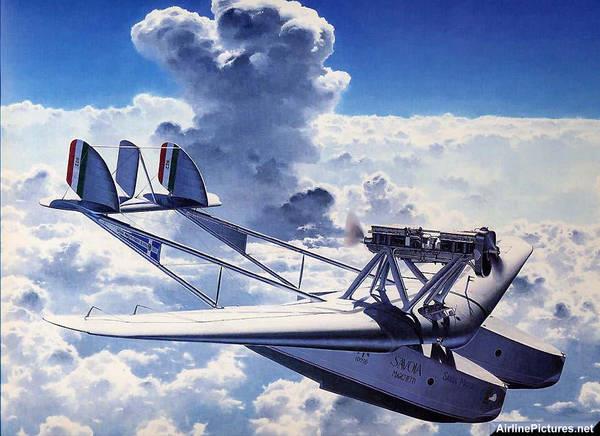
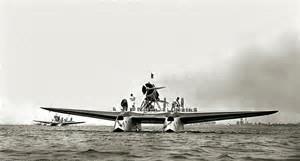
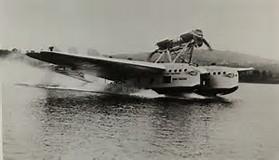
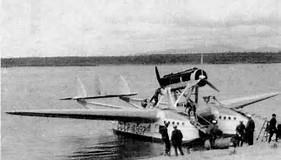
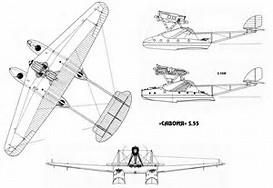
Role: Flying boat
Manufacturer: Savoia-Marchetti
Designer: Alessandro Marchetti
First flight: August 1924
Introduction: 1926
Retired: 1945
Primary users: Società Idrovolanti Alto Italia (Savoia)
Regia Aeronautica
Number built: 243+
Variants: Savoia-Marchetti S.66
S'sonic
Stealth
Menu
Space
Transport
Menu
Topic
Menu
Study
Menu








